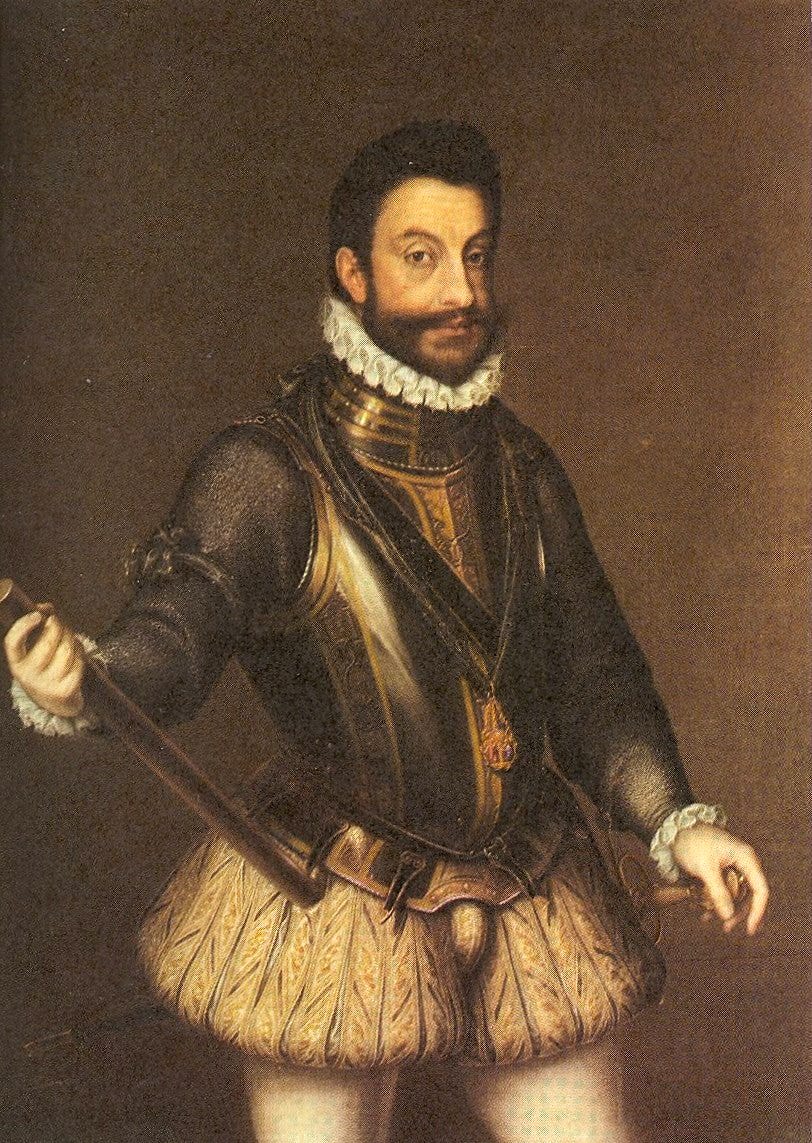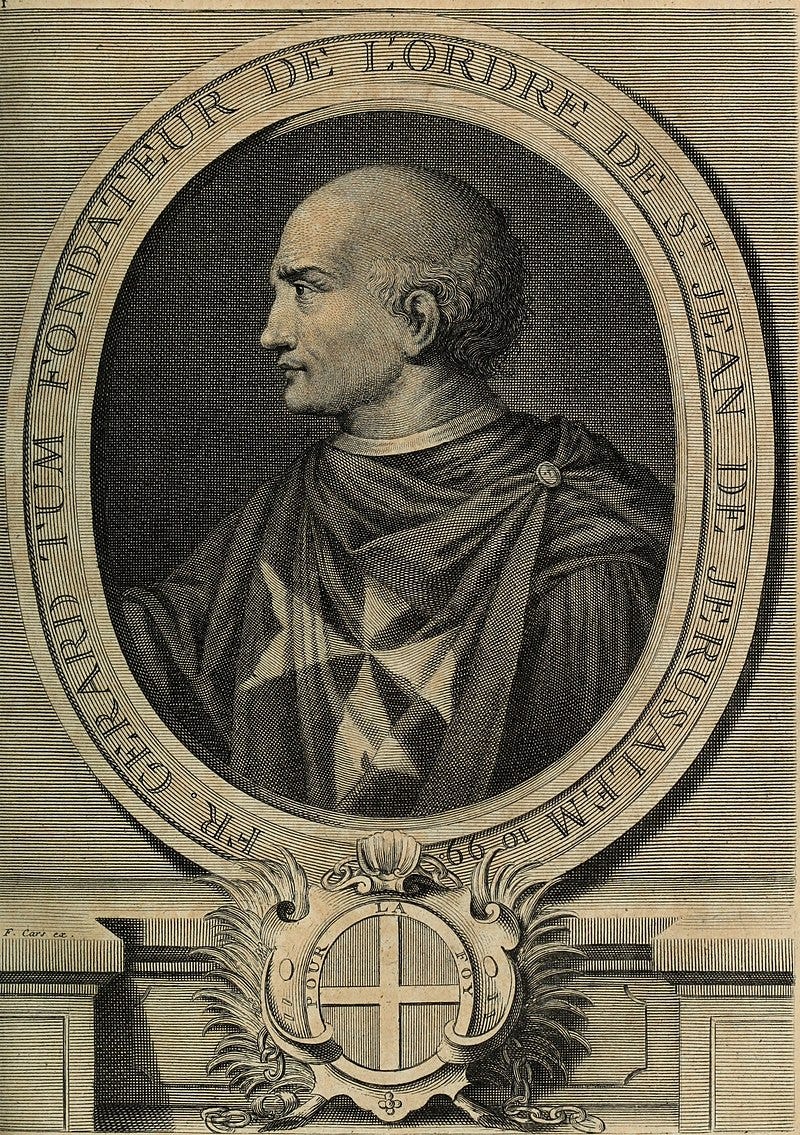
The coat of arms of the Order of St. Lazarus. Image by Mathieu Chaine, CC BY-SA 3.0
The Order of St. Lazarus, often referred to as the Leper Brothers of Jerusalem or the Order of Lazarus, is one of the lesser-known, yet profoundly influential, chivalric orders that emerged in the Middle Ages. The Order, which initially began as a leper hospital in the Holy Land, gradually expanded to a military and chivalric order with a profound influence on the culture and religion of the era.
Origins: Hospitaller Entity
The Order of St. Lazarus traces its origins back to the late 11th century, specifically in Jerusalem, when leprosy was a widespread disease. Its initial mandate was to serve as a hospitaller entity, providing care and succor to those afflicted with leprosy. The Order’s patrons chose Lazarus, the biblical figure reputedly resurrected by Jesus, as their namesake—signifying a message of hope and recovery amidst suffering.
Blessed Gerard – The First Grand Master
Blessed Gerard, also known as Gerard Tum, was a crucial figure in the establishment of the Order of St. Lazarus. He is recognized as the first Grand Master of the Order of Saint Lazarus of Jerusalem, which was founded in the 12th century.
Gerard Tum, a native of Martigues, France, was a layman who dedicated himself to serving the sick and infirmed. He devoted his life to charitable work, particularly caring for individuals afflicted with leprosy, a devastating and highly stigmatized disease during the medieval period.
According to historical accounts and legend, Gerard Tum was moved by the suffering of lepers and felt called to alleviate their pain and isolation. He founded a leper hospital near the Church of St. Lazarus in Jerusalem, where he and a group of companions tended to the needs of lepers, providing them with medical care, food, and spiritual comfort.
The hospital and the community of caregivers that gathered around Gerard Tum eventually evolved into a religious and chivalric order. This group of devoted individuals took religious vows and became known as ”The Order of St. Lazarus”, or ”The Order of Saint Lazarus of Jerusalem.”
Blessed Gerard was chosen as the first Grand Master of the Order due to his dedication, piety, and leadership qualities. Under his guidance, the Order of St. Lazarus became officially recognized by the Church and received papal approval. It continued to grow in prominence and influence, attracting members from various backgrounds who were committed to the order’s dual mission of caring for lepers and defending the Holy Land.
As with many historical figures from the medieval period, it is challenging to verify the exact details of Blessed Gerard’s life and actions to verify due to the scarcity of written records. However, his legacy as the founder and first Grand Master of the Order of St. Lazarus remains an essential part of the order’s history and its enduring commitment to charitable works. Gerard’s feast day is celebrated on September 3rd in the Catholic Church, honoring his charitable and compassionate life.
Dual Purpose of the Order
The Order of Saint Lazarus served a dual purpose. It provided care to those affected by leprosy, building and managing several leprosariums across Europe. On the other hand, it also took on a military role in the crusading era. The knights of the Order, themselves often lepers, became involved in the defense of the Holy Land and fought alongside other chivalric orders like the Knights Templar and the Knights Hospitaller. Their contribution, although often overlooked, played a crucial role in the crusades.
They enjoyed the support of the local government and were recognized by the local rulers. In the year 1144 Baldwin III, King of Jerusalem, and Melisende, his mother confirmed the donation made the two years before of a piece of land situated in front of the leprosarium, a piece of land that had been obtained by the king and queen from a Syrian and planted with vines by the lepers.
In the Year of the Incarnation of the Lord MCXLIIII, of which matter the witnesses are:
Rohard, viscount of Jerusalem; Bernard Vacher; Gerard Passerellus; Sado, marshal.”
The fate of the Order was significantly tied to the broader narrative of the Crusades. With the eventual decline of the Crusades in the 13th century, the Order’s influence began to wane.

The merger with the Order of Saint Maurice under Pope Gregory XIII in 1572 represented a significant turning point, leading to the establishment of the Order of Saints Maurice and Lazarus. The Order underwent further changes throughout history, with different European monarchies conferring its sovereignty.
Order’s Legacy
The modern Order of St. Lazarus, following many historical evolutions and schisms, is far removed from its origins as a leper brotherhood. There are several entities globally claiming the lineage of the Order of St. Lazarus, each with its unique interpretation of the Order’s legacy. Some focus on continuing the original mission of providing care to the sick, others emphasize the chivalric tradition, while some blend the two.

The Order of St. Lazarus provides a compelling historical narrative of how a simple brotherhood of lepers could evolve into a chivalric and military order with a significant impact on the cultural and religious fabric of the Middle Ages. The journey of the order was multifaceted, showing how it managed to survive, adapt, and evolve over centuries, providing a mirror to the broader socio-religious changes in Europe and the Near East.
It is essential to note, however, that research into the Order of St. Lazarus remains an ongoing process. Despite significant strides made in uncovering the rich history of this institution, much remains unknown. The Order’s legacy, as seen in the modern entities bearing its name, continues to evolve and influence even today, nearly a millennium after its inception.
Source
The Order of Saint Lazarus Cartulary, Volume I: 12th – 14th centuries. URL: https://dokumen.tips/documents/the-order-of-saint-lazarus-cartulary-vol-i-12th-14th-centuries.html?page=1
About the authors
Will T. Sherman is an Analyst at The Intelligencer Newsletter, published by R9 media. A history enthusiast, he is particularly interested in the philosophical underpinnings of human existence.
Ivana Tucak, MA in History and Italian Language and Literature is the Editor In Chief at The History Avenue, a historical portal that presents the stories from the past and about the past. She worked as a journalist and writer for news portals and specialized internet sites.
This article was originally published on The Intelligencer.

One thought on “The Order of St. Lazarus: Leper Brothers of the Crusading Era”